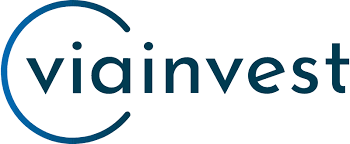Credit Cards
4 Ways to Avoid Paying Credit Card Interest Ever Again

How To Increase Your Credit Limit – The Right Way
Imagine spending $16 extra for every $100 purchase.
A new pair of shoes, an expensive dinner out, or a good parking space at a professional football game can cost $100.
Add $16 to each expense — and we’re not talking taxes — and you’re really paying $116.
The typical credit card charges an interest rate of about 16% per year on balances. Some charge as much as 29% if you’re late on a payment and have to pay penalty interest.
The most savvy shoppers know how to avoid credit card interest. But three out of five credit card accounts carry a balance from one month to the next, according to the Federal Reserve’s payments study.
4 Ways To Avoid Paying Credit Card Interest
No matter how high your credit card interest rates rise, you should avoid paying this extra money in interest charges that goes directly onto your lender’s bottom line.
Here are four ways:
- Know the Grace Period
- Pay as You Buy
- Get a Balance Transfer Card
- Pay in Full Each Month
1. Use Your Grace Period
This could be the simplest way to avoid paying credit card interest, but a lot of people don’t know about it.
Most people think they have only a month to pay off a credit card bill. Your grace period gives you more time, and these extra weeks can help a lot.
Knowing your card’s grace period means you know the exact number of days you have to pay your bill without incurring interest charges on the previous month’s balance.
A typical grace period starts on the last day of your billing cycle and runs through the due date for that cycle. Usually, this means you have about three weeks to pay off purchases after the monthly billing period ends.
To use your grace period, you have to know your card’s billing cycle and its due date. These cycles seldom line up with a calendar month, and they can change by a day or two each month, so you have to pay attention.
For example, a credit card’s billing cycle may start on the 23rd of one month and end on the same day a month later, such as May 23 to June 23.
The payment due date for this billing cycle could be July 17. So the interest-free grace period is June 24 to July 17 — about three weeks.
You can optimize your grace period even more by making your biggest new purchases at the beginning of your card’s billing cycle. This gives more time — up to seven weeks — to pay off the purchase without incurring interest charges for those purchases.
Your credit card statement will always lay out the billing cycle dates and the due date. It may not use the term “grace period” to describe this period of time, however.
The best credit cards have mobile apps that clearly show your statement balance and your due date along with your minimum payment.
Your minimum payment won’t be enough to pay off your new purchases without interest, but your statement balance will.
2. Pay as You Buy
If you really want to be diligent and avoid any possibility of paying interest charges, you should pay off new purchases on your credit card as you make the purchases.
Credit card companies will accept payment any time you want — even multiple times in a month.
Every time you make a purchase with your credit card, you can immediately transfer money — from your bank account to the credit card company — for the same amount.
Balance Transfer Tricks | What Credit Card Companies Don’t Want You To Know
This strategy can require some extra work, but it sets you up for healthy spending habits. You’re always aware of your credit card balance. You’ll never make a late payment. Your monthly statement will show no balance.
You could make this part of your daily or weekly routine. Every Saturday morning, for example, you could add up the week’s purchases and send in a corresponding credit card payment.
Now, mobile apps let you see your new purchases and pay them with your connected bank account instantly. Using this strategy means you’ll never have to worry about exceeding your credit limit.
When I tell some people about this idea they ask why I even use a credit card? Why not skip the middle step and use a debit card?
Because of your card’s cash back rewards. If your card pays 3% cash back on gas, why not claim the money?
On a $40 tank of gas, you’d get $1.20 cash back. If you buy gas four times a month, you’d get $4.80 cash back which you can apply directly to your statement balance.
Also, since your credit report reflects how much of your credit you actually use, keeping a card with no balance can help your credit score.
3. Get a Balance Transfer Card
This is a one-time move, but if your high credit card balance is piling up a large amount of interest, you could transfer the balance to a 0% intro APR card.
A lot of credit cards have introductory offers of no interest for up to 18 months for balance transfers.
By dividing your balance transfer amount into 18 months of payments with no interest, your new card can help you pay off the balance without paying interest along the way.
But this strategy comes with a few big caveats:
- If you don’t pay the balance off during the promotional period, you may be charged interest on the entire amount — even the part of the balance you’ve already paid off.
- Adding new purchases to the new credit card will cause problems. It will increase your monthly payments and jeopardize your goal of paying off the credit card debt with no interest.
- When the introductory period ends, the new card’s ongoing interest rate could be higher than the rate you were paying before your balance transfer. Look beyond the low annual percentage rate promotion on these no APR credit cards unless you know for certain you’ll get the balance paid off in time.
You’d need to get a card designed for balance transfers. A lot of low or no APR intro credit card offers exclude balance transfers and cash advances.
4. Pay The Full Balance Each Month
Cardholders who want a simple way to avoid high interest all know about this strategy: paying off the card’s full balance each month.
This is a simple solution which requires less nuance than using your grace period, but it requires discipline. You’d have to make sure you never spent more in a month than you could afford to pay off at the end of the billing cycle.
If you use your credit card only at the grocery store or only on gasoline, paying off your entire outstanding balance shouldn’t be all that difficult. It’ll likely fall within your monthly budget anyway.
But if you make extra credit card purchases and you can’t afford to pay off the full balance at the end of the month, you’d be setting yourself up for a lot of finance charges the next month and beyond.
This method has a bonus effect: Paying your large, outstanding balance on time each month will improve your credit score.
A higher credit score could give you access to lower interest rates on other kinds of borrowing such as auto loans or personal loans.
Bottom Line: Making Credit Cards Work For You
All these methods have one thing in common: They require you to pay close attention to your personal finances.
- You can’t pay off a statement balance within a grace period if you don’t know when the grace period ends.
- You can’t pay off your new purchases as you make them if you don’t know what you’re spending each week.
- You can’t use a balance transfer card to your advantage if you let the new balance linger beyond the intro APR.
- You can’t pay off the full balance of the card if you don’t keep your credit card purchases in check each month.
When you use one or more of these strategies, your credit card issuers will not collect hundreds of dollars of your hard-earned money in interest charges from you.
They won’t charge you late fees or hike up your credit card interest rate as a penalty either.
In short, you’ll be in control of the process. Your credit card’s cash back rewards will actually go into your pocket instead of softening the blow of huge finance charges.
Should You Pay Your Tax Bill With a Credit Card?
Unmasking Online Deception: An In-Depth Social Catfish Review
Purple Garden Psychics – ($1/Min) FREE Trial Offers, Real Experience & Benefits And More

Refinancing an Auto Loan: How to Know If It’s a Good Idea

Reverse Mortgages Pros and Cons: Ripoff or a Good Idea?

8 Ways it Just Got Easier to Achieve Student Loan Forgiveness
Unmasking Online Deception: An In-Depth Social Catfish Review

Orchard Bank Credit Cards | NOT a Scam!

PrivacyGuard Review

How to choose where to study as an international student


